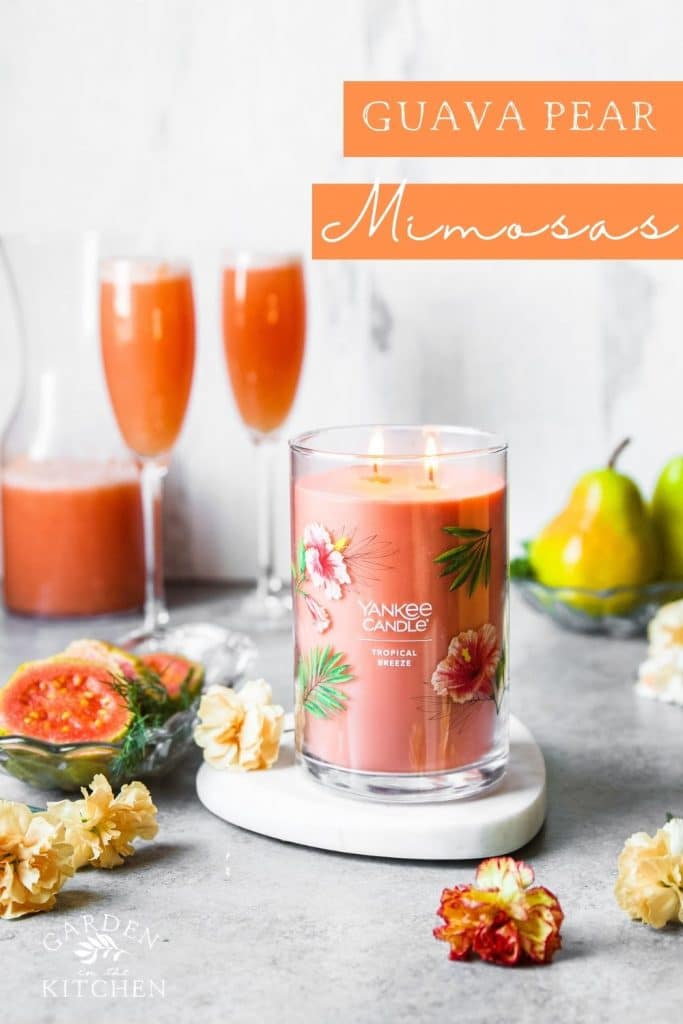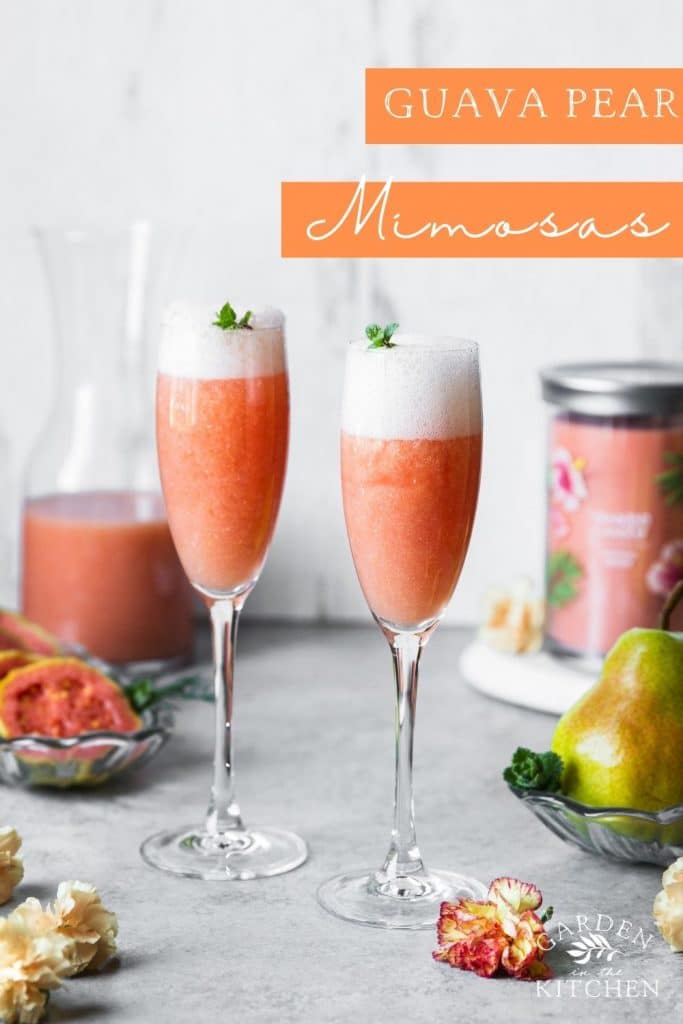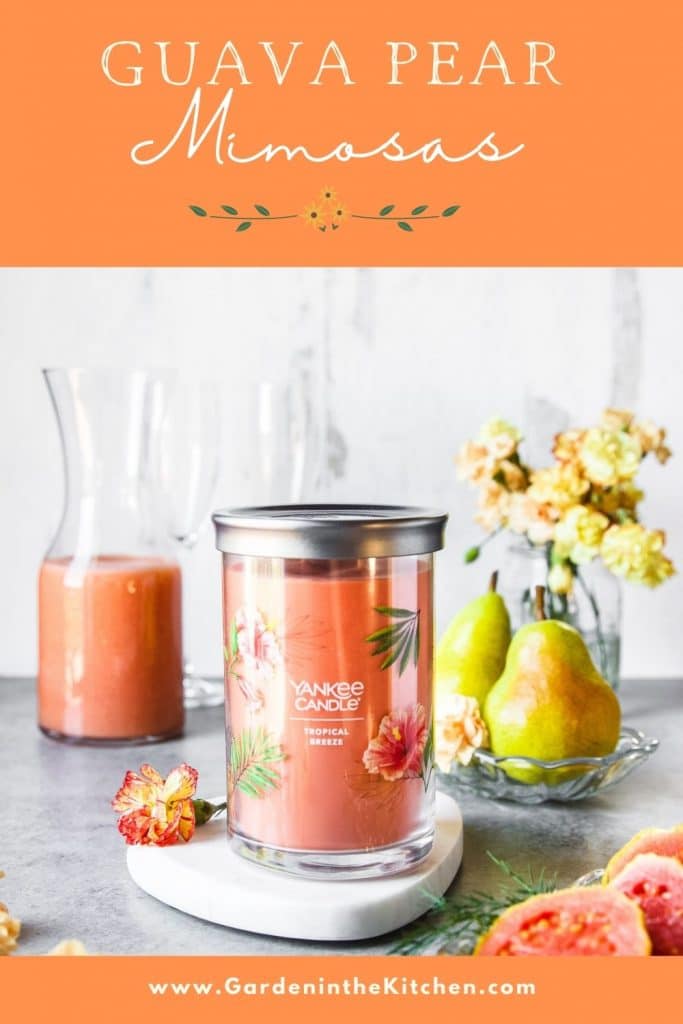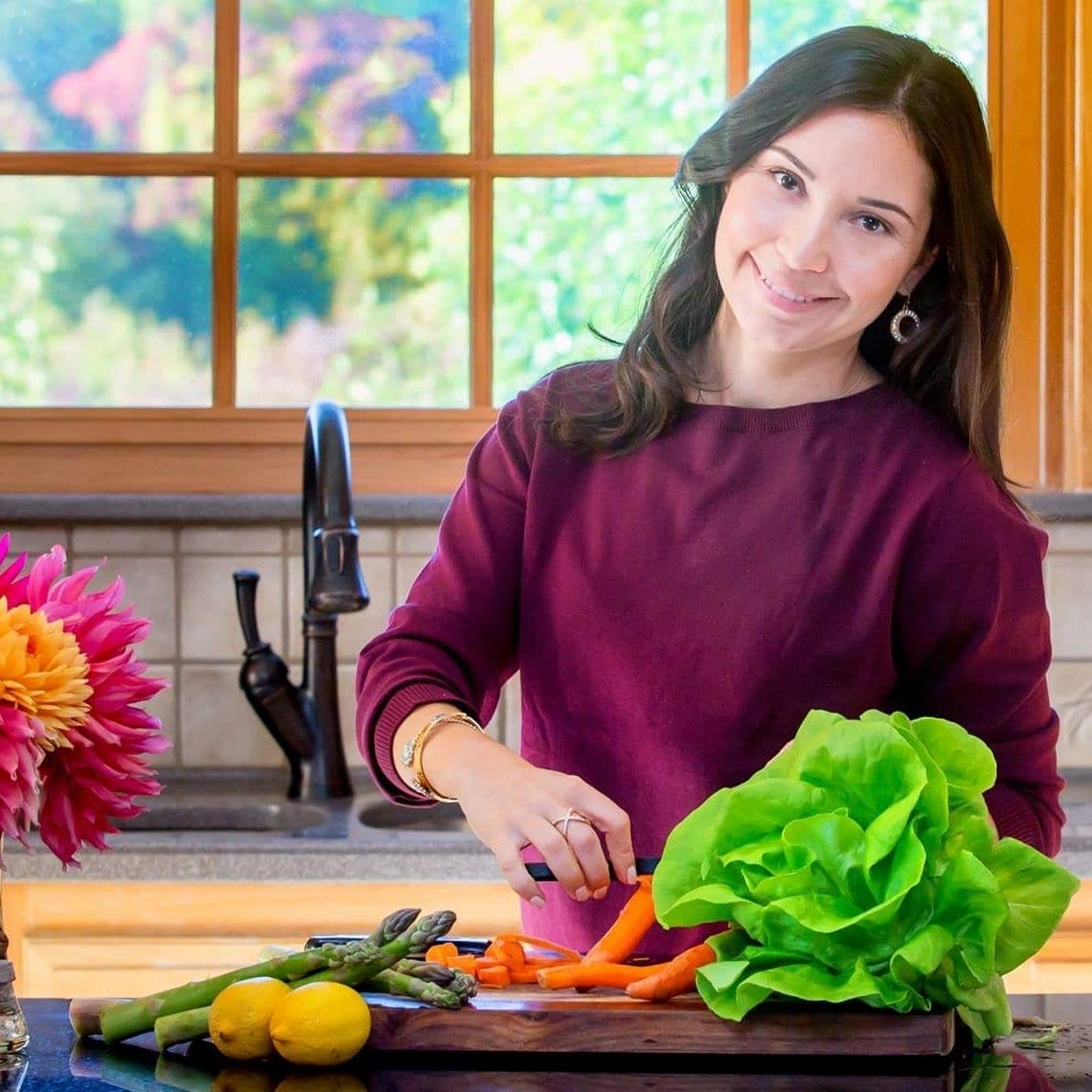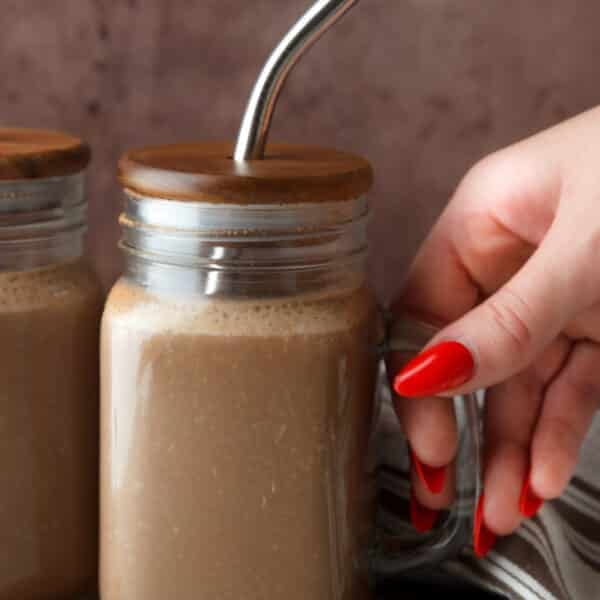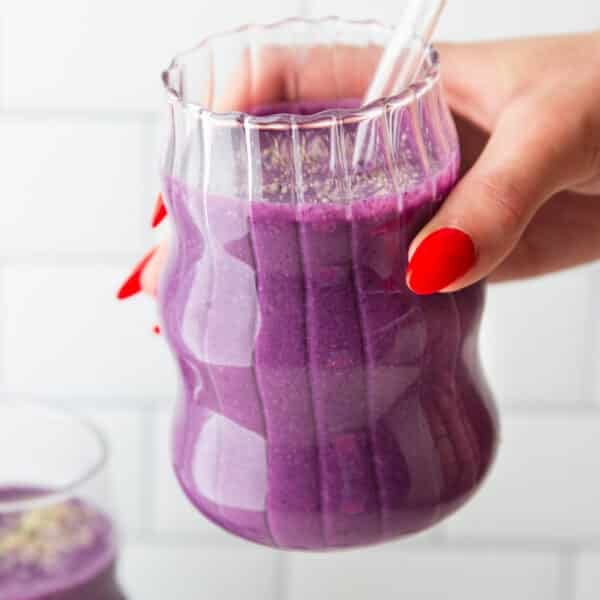Meet your new favorite summer drink, Guava Pear Mimosa! This delicious tropical mimosa features guava with a hint of pear, naturally sweetened with honey and topped with a fruity and beautifully bubbly sparkling rosé!
This post has been sponsored by Yankee Candle but all opinions stated are my own.
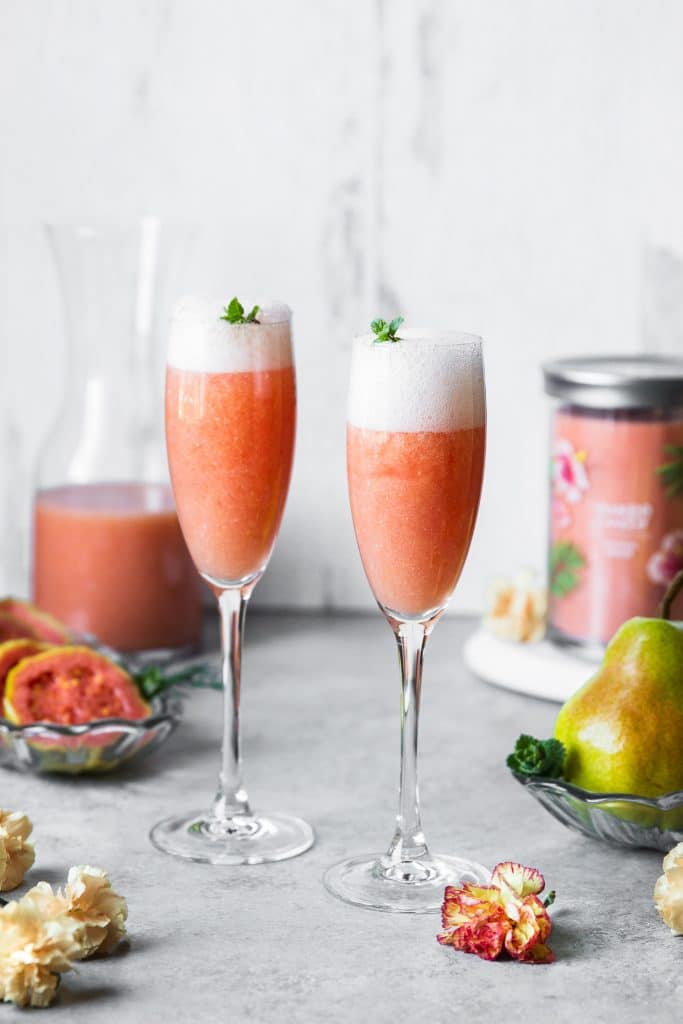
Table of Contents
This year I am welcoming summer with a new favorite drink. This Guava Pear Mimosa is sweet, fruity, bubbly and it gives me all the summer vibes!
Particularly sunset hour or golden hour, as my kids will call it as they proceed to fill up their camera roll with golden light selfies. But who can blame them for feeling the glow of such magical hour.
The inspiration behind this guava pear mimosa recipe comes from Yankee CandleⓇ new fragrance Tropical Breeze from The Signature Collection.
Tropical Breeze has a sweet warm fragrance that reminds you of summertime, and immediately puts a smile on your face. The fragrance has notes of guava, passionfruit and juicy pear, mint leaves and Tahitian vanilla.
Guava was one of my favorite fruit growing up, so this scent hits home for me. After checking out the new fragrances from Yankee CandleⓇ Signature Collection, I felt inspired by Tropical Breeze to create a summer drink to pair with my candle and enjoy sunsets on my back deck.
So after a very long and cold winter, I am beyond excited and looking forward to enjoying a few guava mimosas, warm sunsets and the perfect mood setter, my Tropical Breeze Candle.
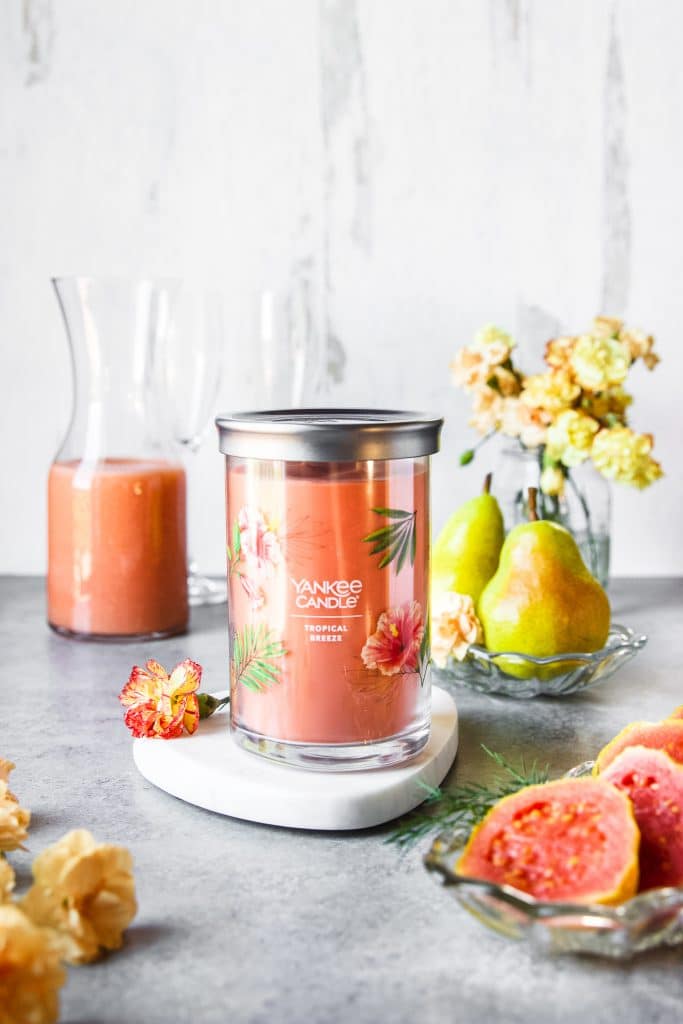
what you will need to make this guava pear mimosa
It doesn’t take much to make a delicious mimosa right from the comfort of your home. Let’s go over the ingredients and substitutions so you start enjoying this delicious drink;
- Guava – ideally you will use 2 fresh or frozen guavas. Guava can be found seasonally in most grocery stores. Sometimes in the frozen isle all year round. If you cannot find guava fruit, worry not – grab some guava juice in the juice and beverages isle.
- Pear – I used a half of a pear.
- Sparkling rosé wine, Prosecco wine or any sweet fruity bubbly rosé of choice.
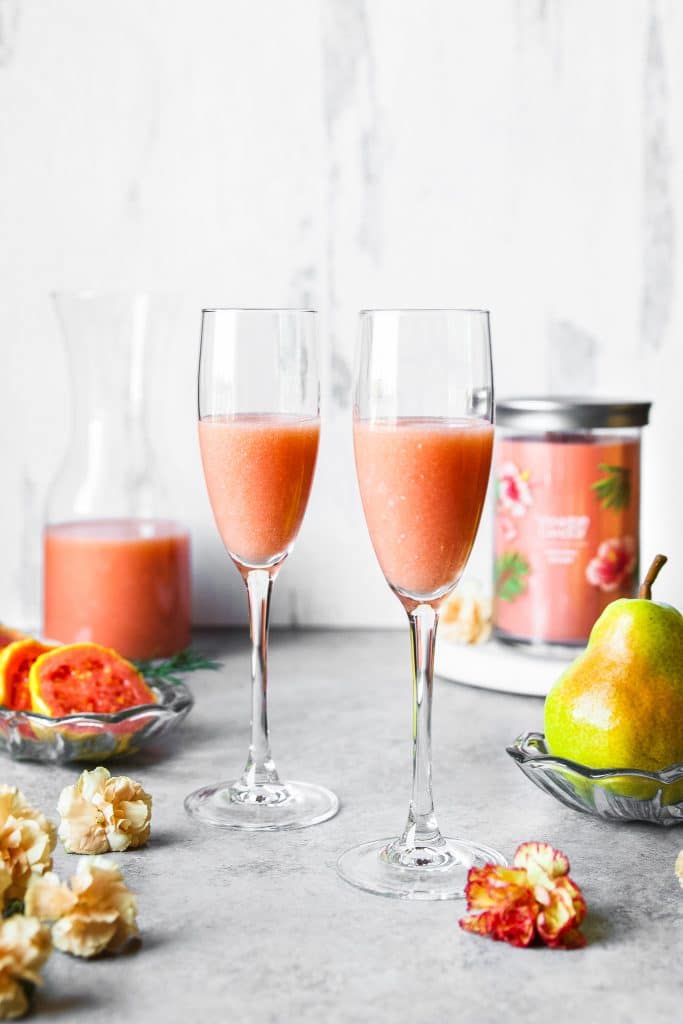
how to make the perfect mimosa
- Work on the juice blend first. For this recipe I used 2 guavas, a half of pear and sweetened with 1 tbsp of honey but feel free to Substitute for regular table sugar.
- Once blended, pass the juice through a sieve to separate the seeds. The separated juice will have a little texture to it, but that’s strictly due to the texture of the fruit.
- When ready to serve fill up a champagne flute half of the way up with guava pear juice and top with sparkling rosé. I used a half and half ratio, but feel free to adjuster according to your taste.
Note: *you can prepare the juice ahead of time, but by no more than one day as the juice will change colors and impact the fresh flavors.
** Additionally you can sub the guava and/or pear for a different fruit combination.
*** For a non-alcohol version substitute the sparkling rosé for sparkling water.
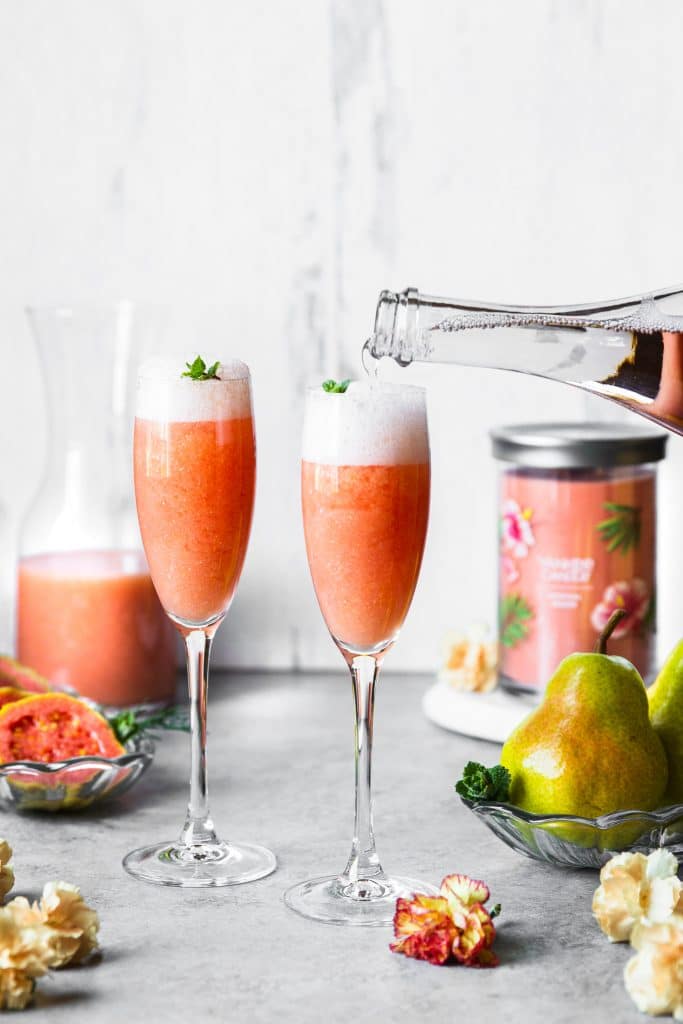
how to create the perfect mood setter at home
Flowers, candles, a glass of mimosa (or your favorite drink), some background music, a good book and a big bowl of fresh fruits are my go-to mood setters.
It really doesn’t take much to create an escape-like atmosphere right at home, with minimal effort. All you need is a few of your favorite things put together to set the mood and lift the spirits.
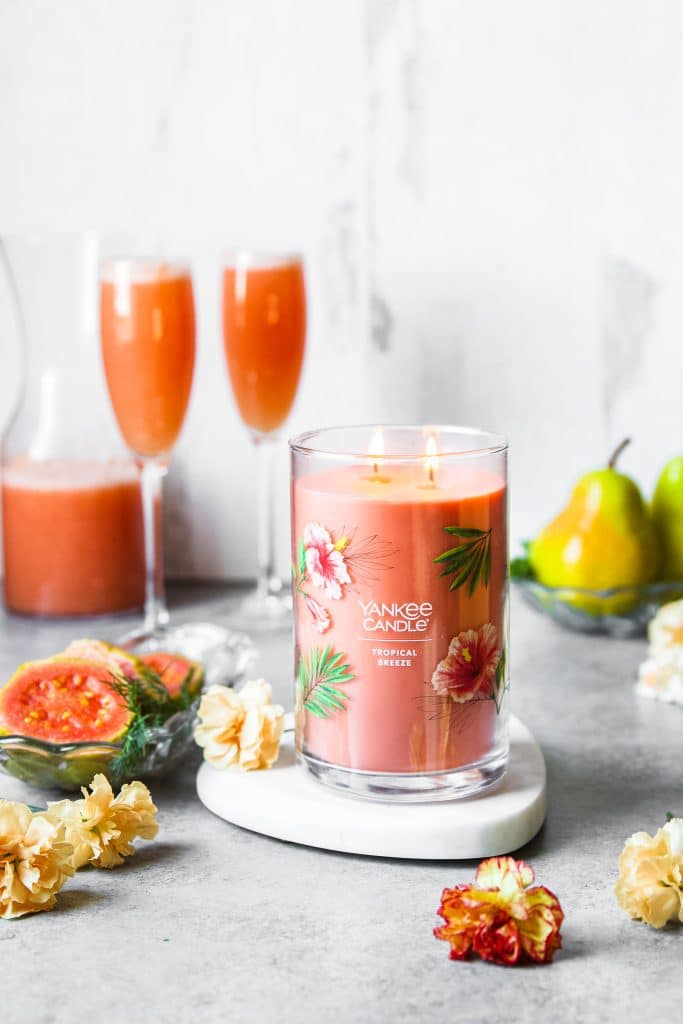
What would that look like for you?
To learn more and discover your favorite scent from Yankee Candle’s Signature Collection visit the link!
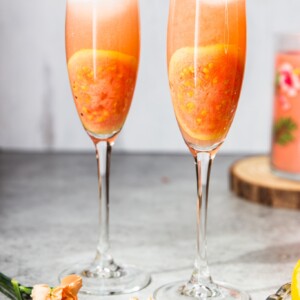
Guava Pear Mimosas
Ingredients
- 2 guava fruit, peeled
- 1/2 pear
- 2 cups filtered water
- 1 tbsp honey
- 1 bottle sparklin rosé wine*
Instructions
- Add the guava (frozen fruit or fresh, pulp works too!), pear, honey and water to a blender cup and pulse until well combined.
- Pass juice through a sieve to remove the seeds. This should yield 2 to 2 1/2 cups of guava pear juice**
- When ready to serve add half guava juice to a champagne flute and top with sparkling rosé. The ratio is half and half, but of course that's totally adjustable 🙂
Notes
Nutrition information is automatically calculated, so should only be used as an approximation.
